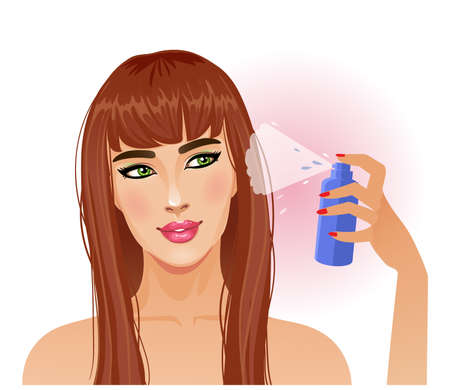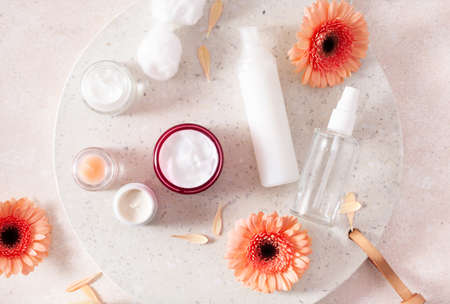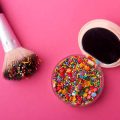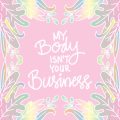1. Understanding Rosacea: Signs, Triggers, and Types
Rosacea is a common but often misunderstood skin condition that affects millions of people in the United States. While it can appear at any age, it’s most frequently diagnosed in adults between the ages of 30 and 50, especially those with fair skin. Knowing how to recognize rosacea and what can make it worse is key to managing it effectively.
What Is Rosacea?
Rosacea is a chronic inflammatory skin condition that mainly affects the face. It tends to come and go in flare-ups and can vary widely from person to person. While there’s no cure, there are many treatments available that can help control symptoms and reduce flares.
Common Signs and Symptoms
If youre wondering whether you might have rosacea, here are some of the most typical signs:
| Symptom | Description |
|---|---|
| Facial Redness | Persistent redness across the cheeks, nose, forehead, or chin. |
| Visible Blood Vessels | Tiny blood vessels may become visible on the surface of the skin. |
| Bumps and Pimples | Acne-like breakouts that dont respond to typical acne treatments. |
| Sensitivity | The skin may feel tender, burn, or sting. |
| Eye Irritation | Watery or bloodshot eyes; sometimes called ocular rosacea. |
Common Triggers That Can Make Rosacea Worse
Certain environmental and lifestyle factors can trigger or worsen rosacea symptoms. Identifying your personal triggers is an important step toward controlling flare-ups. Heres a list of common ones:
| Category | Examples |
|---|---|
| Weather | Sun exposure, hot or cold temperatures, wind |
| Beverages | Hot drinks, alcohol (especially red wine) |
| Food | Spicy foods, dairy products |
| Lifestyle | Stress, intense exercise |
| Skincare Products | Irritating ingredients like alcohol or fragrance |
The Four Main Types of Rosacea Recognized by U.S. Dermatologists
Dermatologists in the U.S. classify rosacea into four main subtypes. Knowing which type you have can help guide appropriate treatment options:
| Subtype | Main Features |
|---|---|
| Erythematotelangiectatic Rosacea (ETR) | Persistent redness, flushing, visible blood vessels. |
| Papulopustular Rosacea | Bumps and pimples along with facial redness; often mistaken for acne. |
| Phymatous Rosacea | Thickened skin with a bumpy texture, usually on the nose (rhinophyma). |
| Ocular Rosacea | Irritated eyes that may feel dry or gritty; eyelid inflammation. |
A Quick Note on Diagnosis
If you suspect you have rosacea, its important to see a board-certified dermatologist for an official diagnosis. They can determine your subtype and recommend a treatment plan tailored to your needs.
This foundational understanding will help as we explore over-the-counter options and prescription treatments available in the U.S. in upcoming sections.
2. Diagnosing Rosacea: When to See a Dermatologist
If youre noticing persistent redness, visible blood vessels, or bumps on your face that resemble acne, you might be dealing with rosacea. While its tempting to self-diagnose or rely on over-the-counter products, getting a proper diagnosis from a board-certified dermatologist is crucial. Heres what you need to know about identifying rosacea and why seeing a specialist matters.
Why Getting a Medical Diagnosis Matters
Rosacea can look similar to other skin conditions like acne, eczema, or even lupus. Misdiagnosing it can lead to using the wrong treatments, which may worsen symptoms over time. A dermatologist has the training to accurately identify rosacea and recommend the most effective treatment plan for your skin type and condition severity.
Common Symptoms That May Indicate Rosacea
If youre experiencing any of the following signs regularly, its time to consider scheduling an appointment:
- Frequent facial flushing or blushing
- Persistent redness across cheeks, nose, forehead, or chin
- Visible broken blood vessels (telangiectasia)
- Red bumps or pimples that dont respond to typical acne treatments
- Eye irritation (dryness, redness, swelling)
- Thickening of the skin, especially around the nose
What to Expect During a Dermatology Visit
A visit to the dermatologist for rosacea diagnosis is typically quick and non-invasive. Heres a breakdown of what usually happens:
| Step | What Happens |
|---|---|
| Medical History Review | The doctor will ask about your symptoms, lifestyle triggers (like sun exposure or spicy foods), skincare routine, and family history of skin conditions. |
| Skin Examination | Your dermatologist will examine your face under good lighting to assess redness patterns, presence of bumps, and any vascular changes. |
| Differential Diagnosis | The doctor will rule out other skin conditions such as acne vulgaris or seborrheic dermatitis. |
| Treatment Discussion | If diagnosed with rosacea, youll talk about treatment options including prescription topicals, oral medications, lifestyle adjustments, and possibly laser therapy. |
Note:
No lab tests are required to diagnose rosacea in most cases—it’s primarily based on clinical observation.
The Benefits of Early Diagnosis
Catching rosacea early means you can start managing it before it worsens. Left untreated, rosacea can become more severe and harder to control. Early treatment helps reduce flare-ups and long-term damage like thickened skin or permanent redness.
When Should You See a Dermatologist?
If youve been experiencing symptoms for more than a few weeks without improvement—or if over-the-counter products seem ineffective—it’s time to make that appointment. Additionally, if your symptoms are affecting your self-esteem or quality of life, professional help can make all the difference.
Pro Tip:
You don’t need a referral to see a dermatologist in most states across the U.S., especially if youre using private insurance. Check with your provider for specifics.
Getting expert advice ensures youre not wasting time—and money—on ineffective treatments while helping you keep your skin calm and under control.

3. Top Over-the-Counter Products to Help Manage Rosacea
If youre dealing with rosacea, you know how tricky it can be to find products that soothe your skin without making things worse. Luckily, there are several over-the-counter (OTC) treatments available in the U.S. that are gentle, effective, and easy to find at most drugstores or online. Heres a curated list of dermatologist-recommended OTC options that can help calm flare-ups and reduce redness.
🧴 Gentle Cleansers
Harsh soaps can strip the skin and trigger rosacea symptoms. Instead, opt for fragrance-free, non-foaming cleansers made for sensitive skin. Look for terms like “gentle,” “non-comedogenic,” and “soap-free” on the label.
| Product Name | Main Features | Where to Buy |
|---|---|---|
| Cetaphil Gentle Skin Cleanser | Fragrance-free, hydrating, dermatologist-tested | Target, Walgreens, Amazon |
| La Roche-Posay Toleriane Hydrating Gentle Cleanser | Ceramide-rich, no sulfates or parabens | CVS, Ulta, Amazon |
| Neutrogena Ultra Gentle Daily Cleanser | No dyes or fragrances, suitable for very sensitive skin | Walmart, Amazon, Rite Aid |
💧 Moisturizers for Barrier Repair
A strong skin barrier is key when managing rosacea. The right moisturizer helps lock in hydration and protect against environmental triggers like wind or cold weather.
| Product Name | Main Ingredients | Sensitivity Rating |
|---|---|---|
| CeraVe Moisturizing Cream | Ceramides, hyaluronic acid | Excellent for sensitive skin |
| Eucerin Redness Relief Night Cream | Licochalcone (anti-inflammatory), glycerin | Mild and soothing |
| Avene Antirougeurs Fort Relief Concentrate | Dextran sulfate, thermal spring water | Great for redness-prone skin |
🌿 Redness-Reducing Ingredients to Look For
Certain ingredients are known to help reduce facial redness and irritation without being harsh on reactive skin. Here are some of the most rosacea-friendly ones:
- Niacinamide: A form of vitamin B3 that helps calm inflammation and strengthen the skin barrier.
- Aloe Vera: Soothing and cooling; ideal during flare-ups.
- Zinc Oxide: Offers sun protection while calming irritated skin.
- Licochalcone: An anti-inflammatory ingredient derived from licorice root.
- Thermal Spring Water: Naturally rich in minerals; often found in French pharmacy brands.
Sunscreen Is Non-Negotiable ☀️
The sun is one of the biggest rosacea triggers. Choose a mineral-based sunscreen with SPF 30 or higher that contains zinc oxide or titanium dioxide. These are less likely to cause irritation compared to chemical filters.
| Sunscreen Product | Main Ingredients | User-Friendly Features |
|---|---|---|
| EltaMD UV Clear Broad-Spectrum SPF 46 | Zinc oxide, niacinamide | No fragrance or parabens; lightweight texture |
| CeraVe Hydrating Mineral Sunscreen SPF 30+ | Zinc oxide, ceramides, hyaluronic acid | Mild formula designed for sensitive skin types |
| TIZO3 Facial Primer Sunscreen SPF 40 | Titanium dioxide, zinc oxide | Tinted formula that also works as a makeup primer |
The right OTC products can make a big difference in managing rosacea symptoms day-to-day. Stick to gentle formulations with soothing ingredients and always patch test new products before applying them widely on your face.
4. Prescription Treatments That Work: What Dermatologists Recommend
When over-the-counter options arent enough to manage rosacea symptoms, dermatologists often turn to prescription treatments. These medications are designed to reduce inflammation, control redness, and treat the bumps and pimples that come with rosacea. Heres a simple breakdown of the most commonly prescribed treatments in the U.S., how they work, and who they’re best for.
Topical Medications
Topical prescriptions are applied directly to the skin and are usually the first step in treating mild to moderate rosacea. They help reduce redness, inflammation, and breakouts.
| Medication | How It Works | Best For |
|---|---|---|
| Metronidazole (e.g., MetroGel, MetroCream) | An antibiotic that reduces inflammation and fights bacteria on the skin. | People with inflammatory bumps and pustules (papulopustular rosacea). |
| Ivermectin (e.g., Soolantra) | Kills skin mites called Demodex and reduces inflammation. | Those dealing with persistent redness and acne-like breakouts. |
| Azelaic Acid (e.g., Finacea) | A gel or foam that helps unclog pores, reduce swelling, and calm redness. | Individuals with sensitive skin or those seeking a non-antibiotic option. |
Oral Medications
If rosacea is more severe or not responding well to topical treatments, doctors may prescribe oral medications. These help control deeper inflammation from within the body.
| Medication | How It Works | Best For |
|---|---|---|
| Doxycycline (low-dose) | An anti-inflammatory antibiotic that calms flare-ups without high-dose antibiotic side effects. | Moderate to severe cases with papules, pustules, or eye involvement (ocular rosacea). |
| Tetracycline / Minocycline | Antibiotics that reduce bacteria and swelling throughout the body. | Patients who don’t respond to topical therapy or need faster relief. |
Who Should Consider Prescription Treatments?
If youre experiencing frequent flare-ups, painful bumps, or if your rosacea is affecting your eyes or daily life, it’s time to talk to a dermatologist. Prescription options can be tailored based on your skin type, symptom severity, and lifestyle needs. Remember—what works for one person may not work for another, so getting professional guidance is key.
Pro Tip:
If youre prescribed a medication like doxycycline or metronidazole, make sure to use it exactly as directed—even if symptoms improve early. Consistency is important in keeping rosacea under control.
5. Lifestyle Adjustments and Skincare Tips for Long-Term Control
Rosacea can be a lifelong condition, but with the right daily habits and skincare choices, flare-ups can become much more manageable. Here’s how to tailor your lifestyle to keep symptoms under control while living in the U.S.
Daily Skincare Routine
Gentle is key. Avoid harsh scrubs or products with alcohol, menthol, or fragrances. Stick to a simple routine that soothes and protects your skin.
Recommended Routine:
| Step | Product Type | Tips |
|---|---|---|
| Morning Cleanser | Fragrance-free gentle cleanser | Avoid hot water, use lukewarm instead |
| Moisturizer | Non-comedogenic, soothing ingredients (like ceramides) | Apply while skin is slightly damp |
| Sunscreen | Mineral SPF 30+ (zinc oxide or titanium dioxide) | Essential every day, even when cloudy |
| Night Cleanser | Same as morning cleanser | Be extra gentle if skin feels irritated |
| Night Cream | Hydrating moisturizer with calming agents like niacinamide | Avoid heavy oils that may trigger rosacea |
Sun Protection Is Non-Negotiable
The sun is one of the top triggers for rosacea flares. Always protect your face—even during short walks or errands.
- Wear broad-spectrum SPF 30 or higher daily.
- Use hats and sunglasses. Wide-brimmed hats offer extra protection.
- Avoid peak sun hours: typically between 10 AM and 4 PM.
Diet Modifications That Make a Difference
Certain foods and drinks can trigger rosacea symptoms. Everyone is different, so it’s helpful to track what affects you personally. However, some common culprits include:
| Avoid/Limit | Better Options |
|---|---|
| Spicy foods (like hot wings or chili) | Mildly seasoned meals without heat-inducing spices |
| Hot beverages (coffee, tea) | Iced versions of coffee or herbal teas |
| Alcohol (especially red wine) | Sparkling water with fruit slices or mocktails |
Stress Management: Mind-Body Connection Matters
An American lifestyle often comes with a fast pace and high stress—which can worsen rosacea. Building stress-relief habits into your daily life helps reduce flares.
Tried-and-True Techniques:
- Meditation & deep breathing: Even five minutes a day makes a difference.
- Regular exercise: Choose low-impact options like walking, swimming, or yoga.
- Adequate sleep: Aim for at least seven hours nightly to allow your skin time to recover.
- Create boundaries: Saying no and prioritizing self-care isnt selfish—its essential.
Your Environment Matters Too
- Avoid extreme temperatures indoors and out.
- If using a heater or AC, add a humidifier to prevent dryness.
- Select laundry detergents without dyes or perfumes to avoid irritation.
Lifestyle adjustments may take time to become habits, but they can be game-changers in managing rosacea long-term. When combined with the right treatments, these everyday tips can help you feel more comfortable and confident in your skin.


